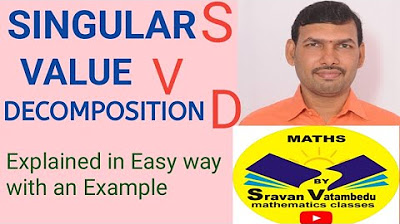AP Gov | 1.5 Ratification of the U.S. Constitution | NEW!
Summary
TLDRThis video delves into the U.S. Constitution's creation, highlighting the pivotal role of compromise. It discusses the Virginia and New Jersey Plans, leading to the Great Compromise which established a bicameral legislature. The Electoral College and the Three-Fifths Compromise are also covered, revealing how they balanced power and representation. The video concludes by noting the Constitution's flexibility for future amendments, emphasizing its enduring relevance.
Takeaways
- 📜 The U.S. Constitution was drafted in 1787 with the initial goal to amend the Articles of Confederation, but it evolved into a replacement document.
- 🤝 The Great Compromise, also known as the Connecticut Compromise, led to a bicameral legislature with the House of Representatives based on population and the Senate with equal representation for each state.
- 🏛️ The Grand Committee was instrumental in negotiating the bicameral legislature, ensuring large states agreed by allowing tax and revenue bills to originate in the House where they had more influence.
- 🤔 The Electoral College was a compromise between direct election of the president by citizens and selection by Congress, resulting in an indirect election process.
- 🔢 The Three-Fifths Compromise controversially counted five slaves as three people for congressional representation, which benefited the South and perpetuated slavery.
- 🚫 The compromise on the importation of slaves allowed the slave trade to continue for 20 years after the Constitution's ratification before it could be banned.
- 📝 The lack of a Bill of Rights was a point of contention raised by Anti-Federalists, leading to James Madison introducing amendments that became the Bill of Rights.
- 🛠 Article 5 of the Constitution provides a process for amending the Constitution, either through a proposal by 2/3 of Congress followed by ratification by 3/4 of the states, or by 2/3 of state legislatures followed by the same ratification process.
- 🌟 The Constitution, while providing a framework, left many issues unresolved and open to interpretation, acknowledging that it was not perfect and allowing for future changes.
Q & A
What was the primary goal of the Constitutional Convention in the summer of 1787?
-The primary goal was to amend the Articles of Confederation, but it became clear that James Madison and others had intentions to draft a new constitution.
What were the two main plans discussed at the Constitutional Convention?
-The two main plans were the Virginia Plan, which advocated for a stronger central government with a bicameral legislature based on population, and the New Jersey Plan, which proposed maintaining a unicameral legislature with equal representation for each state.
What was the outcome of the Great Compromise, also known as the Connecticut Compromise?
-The Great Compromise established a bicameral legislature with the House of Representatives based on population and the Senate with equal representation for each state, each having two senators.
How did the Grand Committee persuade large states to agree to equal representation in the Senate?
-They made a deal that all tax and revenue bills must originate in the House of Representatives, where large states had a significant advantage.
What was the Electoral College designed to achieve, and how did it compromise between direct election and congressional selection?
-The Electoral College was designed as a compromise between direct election by citizens and selection by Congress, allowing people to vote for electors who then elect the president.
What was the three-fifths compromise, and how did it impact representation in the House and the Electoral College?
-The three-fifths compromise stated that for congressional representation purposes, every five slaves would count as three people. This led to the South being over-represented in both the House and the Electoral College.
What was the compromise regarding the importation of slaves, and how long did it last before it could be banned?
-The compromise allowed the slave trade to continue for 20 years after the ratification of the Constitution before it could be legally banned.
How did the lack of a Bill of Rights initially impact the debate over the ratification of the Constitution?
-The lack of a Bill of Rights was seized upon by Anti-Federalists as a significant issue, leading Madison and Hamilton to eventually relent and introduce amendments that became the Bill of Rights.
What does Article 5 of the Constitution outline, and how does it provide for future changes to the Constitution?
-Article 5 outlines the amendment process, providing two methods: one where 2/3 of both houses of Congress propose an amendment, which then needs to be ratified by 3/4 of the states, and another where 2/3 of state legislatures can propose an amendment, which also needs to be ratified by 3/4 of the states.
What does the script suggest about the Constitution's ability to address all issues and disagreements?
-The script suggests that while the Constitution provides a framework, it leaves many issues open to interpretation and disagreement, and acknowledges that it did not get everything exactly right.
Outlines

Cette section est réservée aux utilisateurs payants. Améliorez votre compte pour accéder à cette section.
Améliorer maintenantMindmap

Cette section est réservée aux utilisateurs payants. Améliorez votre compte pour accéder à cette section.
Améliorer maintenantKeywords

Cette section est réservée aux utilisateurs payants. Améliorez votre compte pour accéder à cette section.
Améliorer maintenantHighlights

Cette section est réservée aux utilisateurs payants. Améliorez votre compte pour accéder à cette section.
Améliorer maintenantTranscripts

Cette section est réservée aux utilisateurs payants. Améliorez votre compte pour accéder à cette section.
Améliorer maintenantVoir Plus de Vidéos Connexes

SINGULAR VALUE DECOMPOSITION (SVD)@VATAMBEDUSRAVANKUMAR

Singular Value Decomposition (SVD): Mathematical Overview

Mystery of Area 51 | Are there really UFOs and Aliens? | Dhruv Rathee

How would you go about solving this? Limit of x/sqrt(x^2+1) as x goes to infinity. Reddit inf/inf

Apresiasi Usai Timnas Juara Piala AFF U-19 2024 - iNews Pagi 01/08

Embedded Linux | Introduction To U-Boot | Beginners

How to Diagnose and Replace Universal Joints (ULTIMATE Guide)
5.0 / 5 (0 votes)
